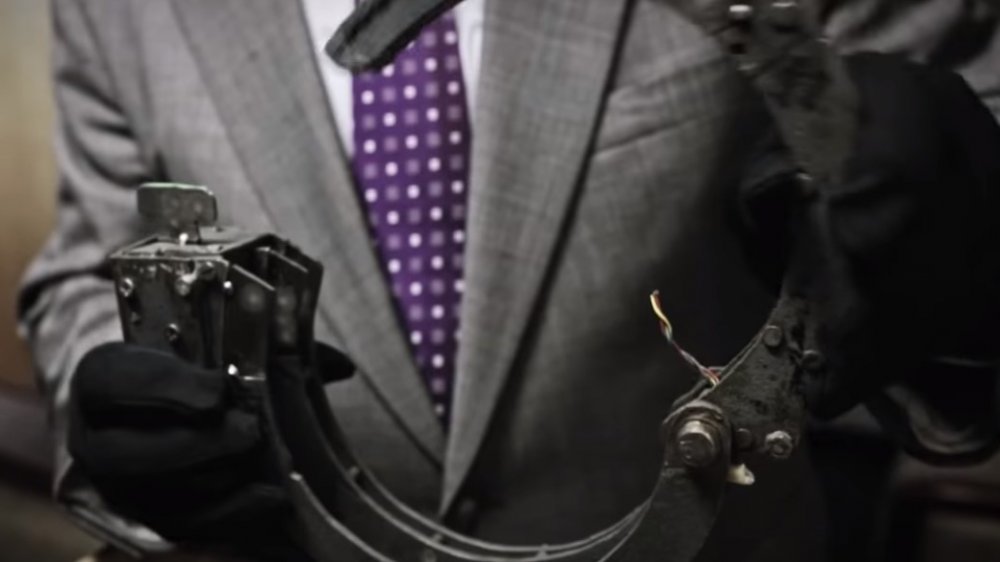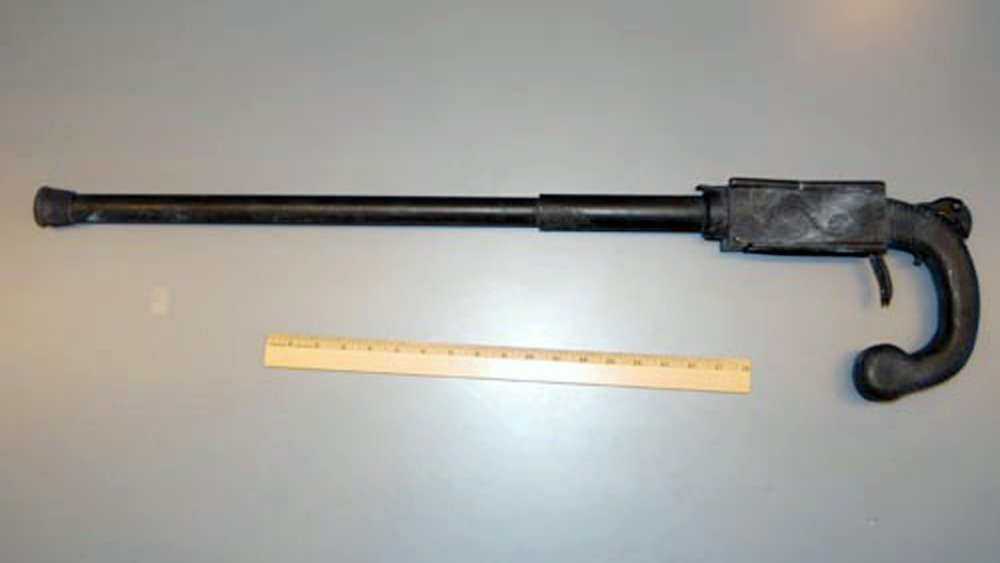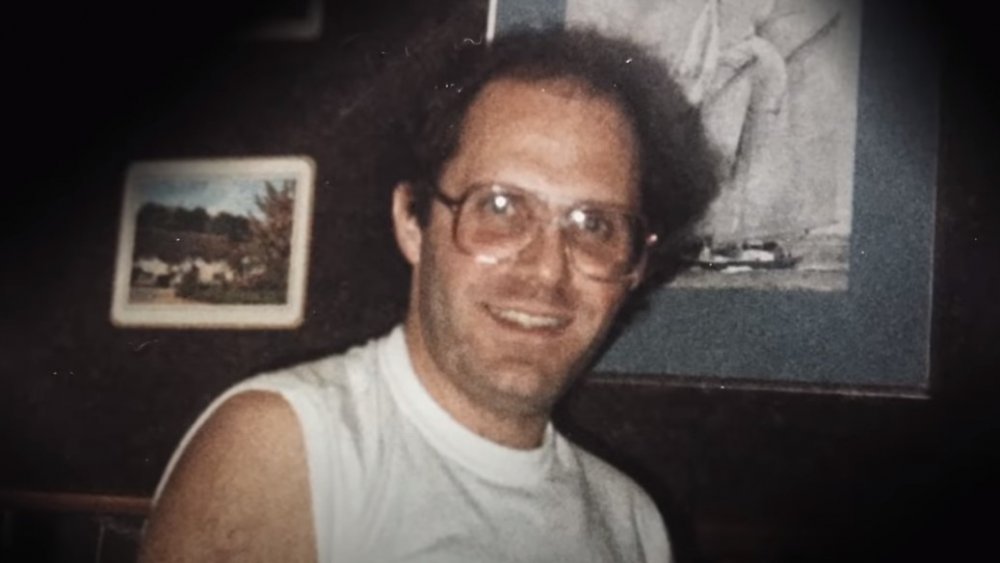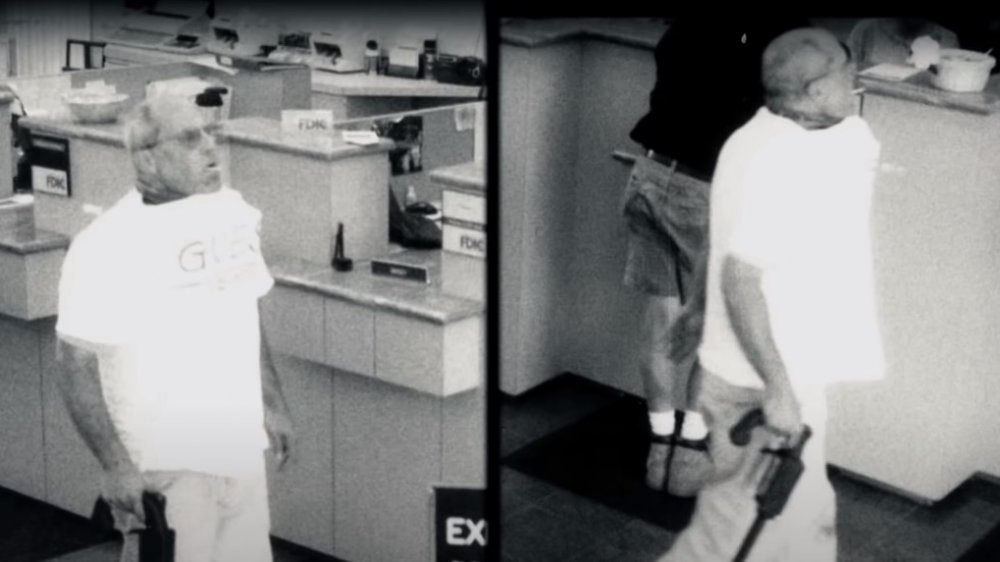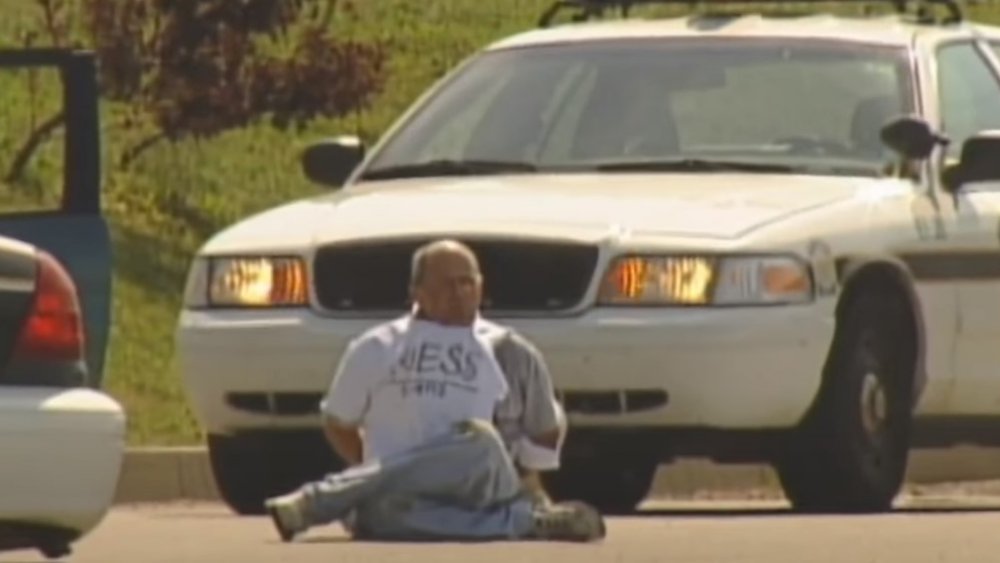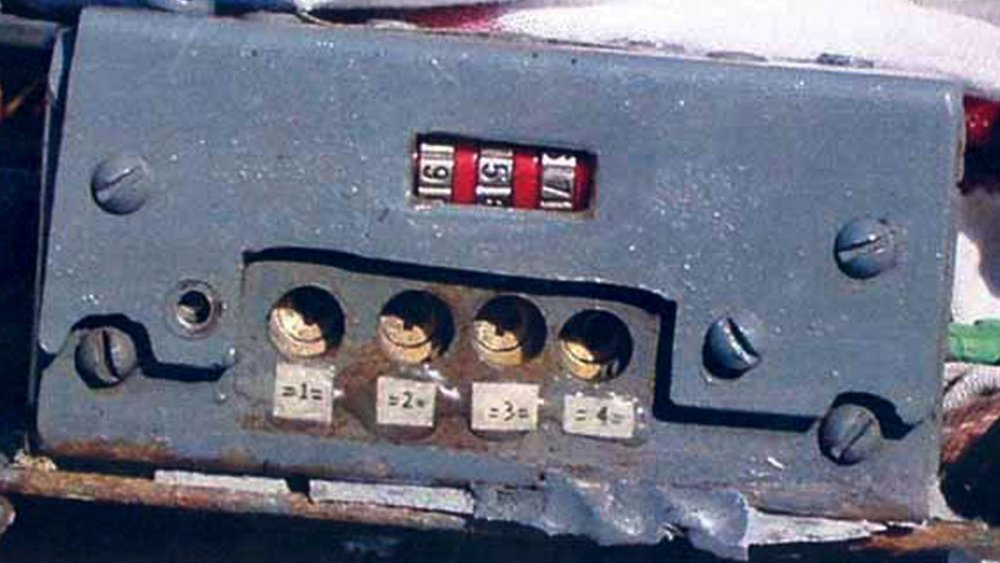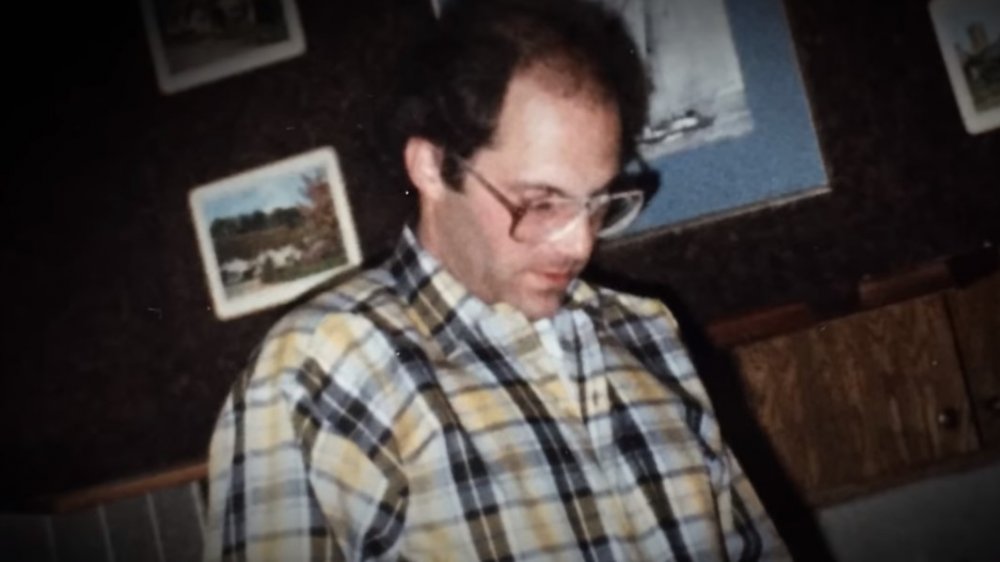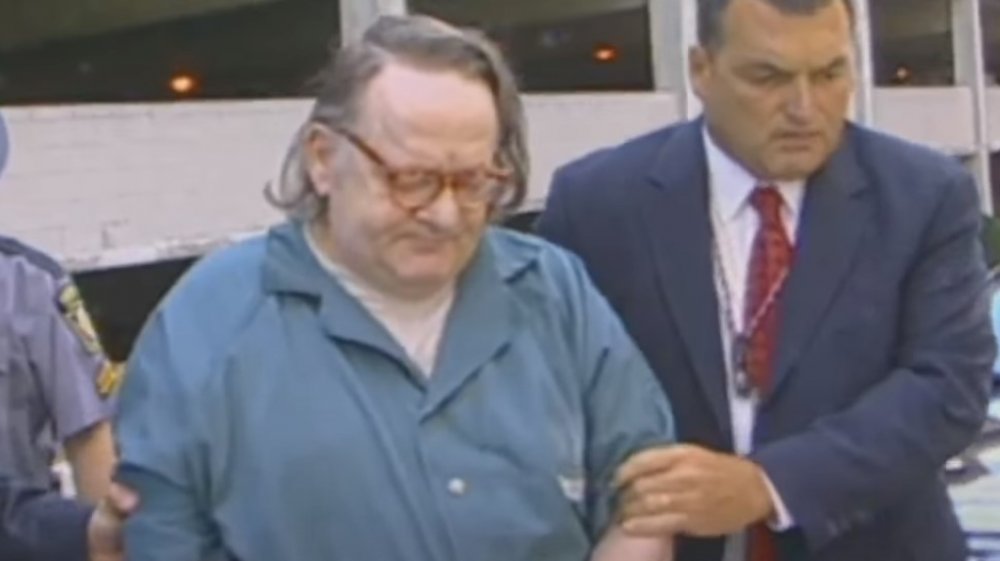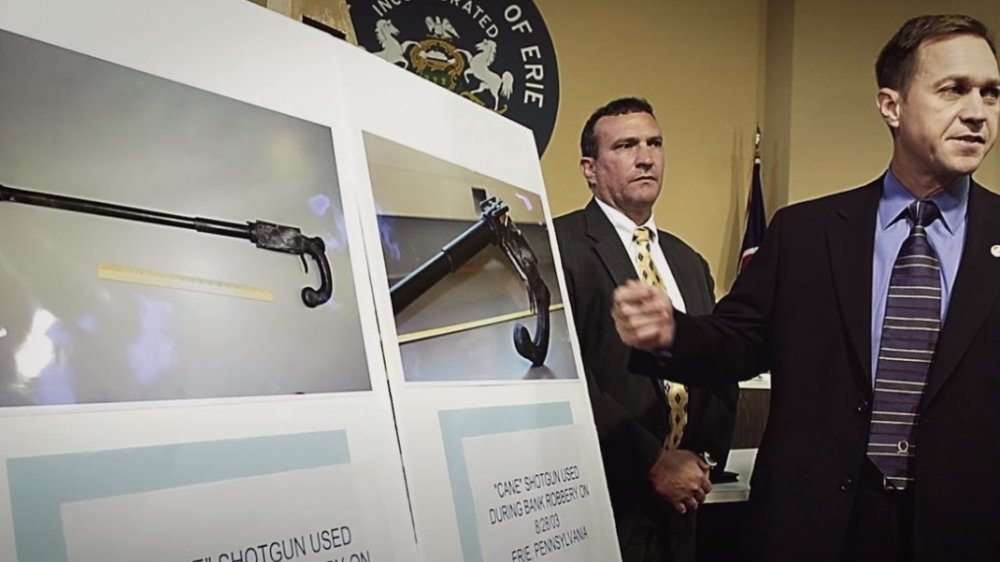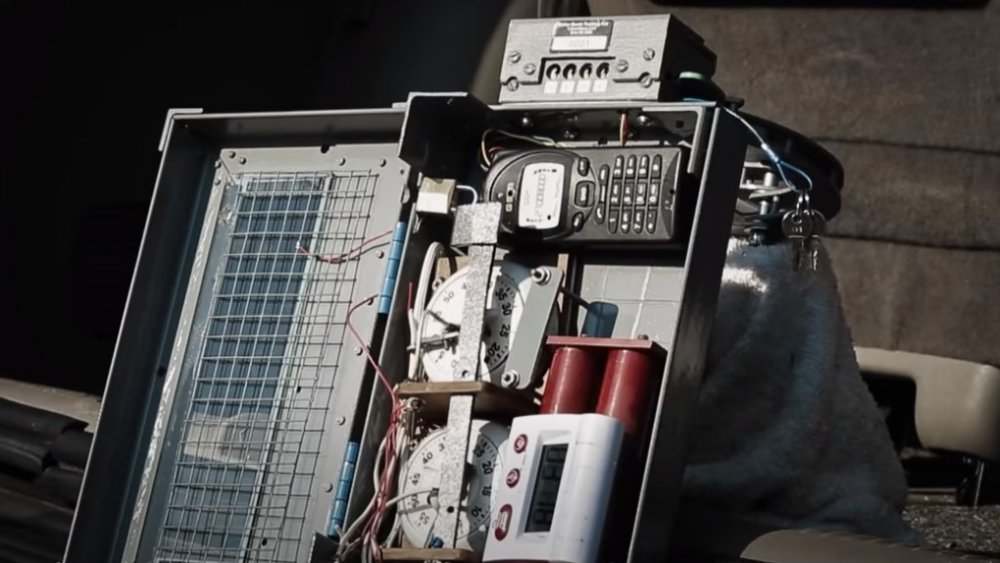The Pizza Bomber: The Crazy Real-Life Story
As you may already know, everyone and their grandmother has a true crime podcast these days. There are entire TV channels and streaming services dedicated to crime stories. Never have the public at large had so many options when it comes to learning about people committing terrible acts. Everyone can be their own personal Sherlock Holmes, and you don't even have to go outside.
While most crime stories have a lot of commonalities (the husband did it, and DNA can prove it!), each is a little different in its own unique way. They might be kidnappings, disappearances, or, yes, murders. But perhaps one of the strangest and most unique crimes in history was none of these things. It was... a bank robbery?
In 2003, one of the most bizarre crimes ever seen began unfolding. It just got weirder and weirder as the years went on, and there are still some unanswered questions, too.
A man walks into a bank
On August 28, 2003, a man wearing a white Guess brand t-shirt and carrying a cane (later proven to be a homemade shotgun shaped like a cane) walked into a PNC bank in Erie, Pennsylvania, according to Wired. He seemed like any other ordinary customer who might have come in that day except for one very odd thing — he had a large, metal collar around his neck. This collar was attached to a box under his shirt, creating a large lump under the t-shirt.
Bank employees are trained to be aware of threats, to be on alert for anything that might be amiss. But at first, no one noticed the man, whose name was Brian Douglas Wells. A balding man with thick glasses, the only thing that made him stand out was his strange choice in attire.
But that attire wasn't his choice at all. He walked up to a bank teller and handed her a note, informing her that he needed $250,000 in a bag. The collar and box were a bomb, and they'd go off in 15 minutes if he didn't get the money, according to All That's Interesting. The note was addressed to "Receptionist" and "Bank Manager" and referred to the man in front of her as "Bomb Hostage." It also threatened bank employees and customers, then contained detailed, step-by-step instructions for gathering the money and giving it to the so-called Bomb Hostage.
Just the pizza guy
Brian Douglas Wells was 46-years-old and wasn't a bank robber. He was a pizza delivery driver and he had a clean criminal record. He had worked for 10 years at Mamma Mia's Pizza-Ria in Erie and was a Pennsylvania native, not a criminal mastermind.
According to the story that Wells later told police, he was working an ordinary shift at Mamma Mia's when the phone rang. The caller ordered two sausage and pepperoni pizzas and asked that they be delivered to a road on the edge of town. Wells went to deliver the pizzas himself, according to Wired.
He found the old dirt road and drove all the way to the end, where a TV broadcast tower stood, according to All That's Interesting. Wells said he saw three Black men waiting for him. The men jumped him, forced the bomb collar on him, and gave him several pages of instructions and the shotgun-cane. They said that if he followed the instructions on the paper, he would be able to disarm the bomb and would be unhurt, but he had a time limit he had to follow. The first steps of the instructions told him to drive back across town, go into a specific PNC bank, and hand a note to the teller.
Low on funds
The PNC bank teller, shocked by the note Wells had handed her, told him that she wouldn't be able to produce $250,000 for him. The vault was on a time delay, and it would take longer than the 15 minutes allotted in his note. Instead, she gathered all the money she could from behind the counter and placed it in a bag for Wells. The total was $8,702, far short of a quarter million dollars, according to Wired.
Apparently, this didn't seem to dissuade Wells. Witnesses at the scene alleged that he walked out of the bank calmly and seemingly unperturbed. Bank employees phoned police. Wells then followed the next set steps of his instructions, which directed him to a McDonald's near the bank, where he'd find a note with more instructions under a stone in the parking lot. He found it, according to All That's Interesting.
The treasure hunt, as authorities later called it, involved Wells going to specific locations to find items and four special keys that the instructions said would unlock the collar around his neck. Compatriots of the plotters were watching him every step of the way and could remotely detonate the bomb if he didn't follow instructions. In fact, the meticulous instructions also included detailed maps, descriptions of the bomb's construction, and very pointed threats to "Bomb Hostage" to follow the rules exactly. Not only was his life at stake, but the lives of those around him and his family and friends.
In the middle of the parking lot
Wells was on the way to his second destination when he was stopped by Erie police. They detained Wells and placed him outside of a police vehicle, where he sat on the ground in a parking lot. He explained the situation to police, told them about the three Black men who had placed the collar on him, and how he had to follow his instructions or the bomb would detonate, according to Wired.
The police called in the bomb squad. While they were in route, something strange happened — the bomb around Wells' neck began beeping faster and faster. Wells began to panic and squirm on the ground, pleading with police to help him.
Three minutes before the bomb squad arrived, the collar detonated, tearing a hole in Wells' chest and killing him within moments, according to All That's Interesting. The entire thing was caught on local news cameras, but contrary to popular belief, Wells' death was not broadcast live. This was because of a technical issue, not a moral one, but the news station held the footage back and later turned it over to authorities. A few years later, though, the footage did leak out thanks to a Washington, D.C. radio shock-jock, who obtained the video from an unknown source and posted it on his website.
Reviewing the evidence
After Brian Wells was dead, police picked up two key pieces of evidence: The instructions provided by his attackers and the remnants of the bomb itself. The collar was still attached around Wells' neck, and initial investigations revealed something stunning. The bomb collar was nothing at all like it was described in the instructions. There was no remote detonator. A cellphone was inside the case but wasn't wired to anything. The keyholes on the collar did nothing. It was merely two pipe bombs and kitchen timers, according to Wired. Nothing more complicated than that.
Police also took Wells' instructions and put together a route to follow. They used the time limits from the pages and found that it was physically impossible for someone to complete the steps necessary in the 55 total minutes allotted. Furthermore, they followed the trail to the second clue's location, where Wells was headed when apprehended by police, and found that the clue wasn't even there, according to All That's Interesting. Someone might have taken it, but investigators believe that it was probably never there at all.
Whoever put the bomb collar on Brian Wells never intended for him to live through the day. Even if Wells could have somehow beat the timers and finished the treasure hunt, he would never have been able to remove the bomb on his own.
Four years later
As far as the public knew, things went quiet on Brian Wells' case. The plotters had gotten away with it and Wells had simply been in the wrong place at the wrong time when he got that pizza order. Forty-seven months later, however, in July 2007, law enforcement held a press conference where they announced the strangest twist yet: Brian Wells was not just an innocent bystander. They had uncovered evidence that he was actually in on the plot and worked with the perpetrators as an accomplice, according to Wired. Until something clearly went wrong, that is.
According to police, Wells himself helped plan the scheme and agreed to wear the collar to throw authorities off the trail and let his co-conspirators get away with a bank robbery. To be fair, it's not a terrible plan, and it seems at first, Wells was only meant to wear a fake bomb. He was betrayed, though, and the false bomb was switched out with a real one, according to All That's Interesting. Police even suspected he might not have been aware that the bomb was real until it started beeping.
Brian Wells' family denied these claims at the time and continue to do so to this day. They believe that he was an unfortunate hostage and merely forced to go along with the plot.
Police go down a deep rabbit hole
So what happened in that four year gap that led police to conclude that Wells was a collaborator and not a hostage? It all started with a phone call on September 20, 2003, less than a month after Wells' death. A man named Bill Rothstein contacted police and told them, quite plainly, that there was a dead man in his freezer, according to All That's Interesting. As it so happened, Rothstein also lived in the house right next to the broadcast tower where Wells claimed to be fitted with the bomb collar.
When police arrived at Rothstein's residence, they found Rothstein himself, the dead man in the freezer, later identified as James Roden, and a suicide note from Rothstein (who had not even attempted suicide) that, peculiarly and completely unprompted, stated in its intro that the body in the freezer had nothing to do with Brian Wells' case, according to Wired.
Rothstein was a compulsive hoarder, with trash and various knick-knacks piled high across his house. At the time, police didn't make anything of it, but as they uncovered more clues in the case, they found this hoarding to be a recurring theme in their investigation. They arrested Rothstein and brought him in for questioning.
The man in the freezer
In interviews, Rothstein cooperated and told police that he didn't kill James Roden. It was his ex-girlfriend, Marjorie Diehl-Armstrong, who had shot him. According to Rothstein, he hadn't even spoken to Diehl-Armstrong for a long time before she called and asked if he would help her hide Roden's body. Roden had been Marjorie's then-current boyfriend, and she had killed him in an argument about money, according to Wired. Rothstein agreed to hide the body in his house and eventually dispose of it, but later changed his mind and called police.
Marjorie Diehl-Armstrong had once been a very different person. In her youth, she was very well-liked and considered to be highly intelligent. As she got older, though, her mental condition began to worsen. Much like Rothstein, she also became a compulsive hoarder. She developed issues with bipolar disorder, which caused sharp mood swings, paranoia, and narcissism. She was also not unknown to Erie, PA law enforcement. They had run-ins with her on more than one occasion.
Police arrested Diehl-Armstrong for the murder of James Roden, for which she was sentenced to 20 years in prison, according to All That's Interesting. Rothstein, meanwhile, was charged for his involvement with the crime, but never saw his day in court. He died of lymphoma less than a year after his phone call to police.
Marjorie Diehl-Armstrong made a deal
After being convicted for the murder of James Roden, Marjorie Diehl-Armstrong approached the authorities. For better treatment in prison, Diehl-Armstrong would finally tell everything she knew about Brian Wells, the pizza bomber. Rothstein's letter had been incorrect– James Roden's death was directly connected to the case.
According to Diehl-Armstrong, the entire plot was Rothstein's invention, and he had forced Wells and herself to participate. Diehl-Armstrong was meant to receive some of the heist money, which was what she and Roden had been arguing about when she killed him. Rothstein had put a real bomb on Wells, though, so there were fewer people to split the money with, and he told police about the body in his freezer for the same reason.
Police believed her, but not in the way she expected. They didn't think Rothstein was the mastermind, they thought she was. Everything Marjorie Diehl-Armstrong was telling them seemed to implicate her more than Bill Rothstein, according to Wired. Diehl-Armstrong had a history with police, as mentioned earlier. She had killed her first husband by shooting him six times while he sat on the couch, but successfully managed to convince a jury that it was in self-defense. Her second husband died of a cerebral hemorrhage, but there was evidence that he actually had a head injury. The death was ruled accidental, though, so she was never charged. Law enforcement knew that Diehl-Armstrong had a history of killing, while Rothstein did not.
New evidence emerges
Near the end of 2005, police received the final clue that led them to conclude that Brian Wells participated in the robbery. A witness pointed authorities to a man named Kenneth Barnes (another compulsive hoarder), a close friend of Marjorie Diehl-Armstrong, claiming that Barnes had been involved in the bomb collar case. Police brought him in for questioning and he soon confessed to a version of events that law enforcement already suspected to be true and also copped that Wells was in on the plot, according to All That's Interesting.
Diehl-Armstrong was the plot's mastermind, according to Barnes. The robbery was merely a setup for her to acquire $250,000 to pay a hitman — Barnes himself. She wanted to kill her own father, who she accused of wasting a fortune that she was meant to inherit, according to Wired. The people that Wells had met with by the broadcast tower were Diehl-Armstrong, Rothstein, and Barnes. The three Black men that Wells claimed forced the collar on him never existed.
It was also Diehl-Armstrong who swapped the fake bomb for a real one. Barnes claimed that this moment was the point at which Wells became aware that the bomb was real, though eyewitness accounts from the day of the robbery say that Wells had been cool until the bomb began to beep. Either way, Barnes said that Wells and Roden knew the full details of the plot and had been killed to ensure their silence.
The twists weren't over yet
Armed with Kenneth Barnes' testimony, police put Marjorie Diehl-Armstrong on trial once again, this time for the bomb plot. This led to even more twists being revealed. Namely, why Wells, a pizza guy with no criminal record, agreed to participate despite knowing that Diehl-Armstrong was dangerous. According to testimony given during the trial, Wells was deeply in debt to Barnes for crack. Not for himself, but a prostitute with whom he was in a relationship named Jessica Hoopsick.
Because Wells owed Barnes and his friends so much money, he had no choice but to participate, according to Wired. Or, at least, that was the story, but in an interview for Netflix's 2018 mini-series about the case, Evil Genius, Hoopsick claimed that this wasn't actually true. Wells and Barnes never knew each other until Barnes began looking for a patsy for Diehl-Armstrong's bomb plot. Hoopsick introduced the two, and later felt regret for the decision, saying that Wells was innocent.
Marjorie Diehl-Armstrong was convicted for her role in the plot in 2010. Kenneth Barnes had already pleaded guilty as part of his deal in 2008, according to All That's Interesting. Marjorie Diehl-Armstrong died of breast cancer in 2017 while still in prison. While Barnes did get a reduced sentence for cooperating, it didn't do him any good. He, too, died in prison in 2019.
Is that really the end of it?
Across testimony given by Bill Rothstein, Marjorie Diehl-Armstrong, Kenneth Barnes, and Jessica Hoopsick, none agree with each other 100 percent. Authorities have said that they've pieced together what they can from all of the evidence, and they believe that they closed the case accurately. Some people out there disagree, though. There are plenty of amateur sleuths who suspect that Marjorie Diehl-Armstrong was telling the truth and she wasn't the mastermind. Instead, it was Bill Rothstein pulling all the strings. Like Diehl-Armstrong, Rothstein was highly intelligent and had a history of metalwork and machining, making it likely that he created the bomb collar itself. Those armchair detectives aren't alone, either. Retired FBI agents Jim Fisher and Jerry Clark, who was prominently featured in Evil Genius, also believe Rothstein was responsible for the crime.
Fisher's theory goes even further, though, claiming that Rothstein's crime wasn't about money but about making a puzzle that would confound authorities, according to Wired. Fisher says this is why Rothstein alerted police to the body in his freezer and why his "suicide" note very explicitly mentioned Brian Wells. Rothstein was trying to control the narrative and slowly reveal his plot.
There are also rumors that perhaps the mastermind was never arrested, assuming that neither Diehl-Armstrong nor Rothstein was capable of coming up with such a complex plot. Maybe there was another person manipulating Diehl-Armstrong, Rothstein, and Wells who has never been identified.
